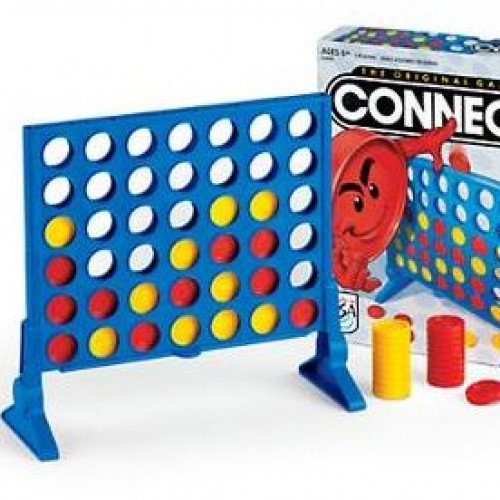CHATURANGA VS CONNECT FOUR

CHATURANGA
Chaturanga (Sanskrit: चतुरङ्ग; caturaṅga), or catur for short, which means 'Four Divisions' (referring to ancient army divisions of infantry Pawn (chess), cavalry Knight (chess), elephantry Alfil (chess), and chariotry Rook (chess)), is an ancient Indian strategy game that is commonly theorized to be the common ancestor of the board games chess, xiangqi, shogi, sittuyin, and makruk. Chaturanga is first known from the Gupta Empire in India around the 6th century AD. In the 7th century, it was adopted as chatrang (shatranj) in Sassanid Persia, which in turn was the form of chess brought to late-medieval Europe. According to Stewart Culin, chaturanga was first described in the Hindu text Bhavishya Purana. The exact rules of chaturanga are unknown. Chess historians suppose that the game had similar rules to those of its successor, shatranj. In particular, there is uncertainty as to the moves of the Gaja (elephant). The origin of chaturanga has been a puzzle for centuries. It has its origins in the Gupta Empire, with the earliest clear reference dating from the sixth century of the common era, and from north India. The first substantial argument that chaturanga is much older than this is the fact that the chariot is the most powerful piece on the board, although chariots appear to have been obsolete in warfare for at least five or six centuries. The counter-argument is that they remained prominent in literature. Several more recent scholars have proposed a gradual evolution in the centuries B.C. in the northern or northwestern border areas of Indian culture, where it was in contact with Greek culture brought by the Macedonian-Greek army, and where some rulers issued coins with fused Greek-Indian imagery. Myron Samsin argues that chaturanga originated in the kingdom of Bactria, ca. 255–55 B.C., in a fusion of the many short-moving men of the Greek game petteia, or poleis, with men derived from the various moves of an Indian race game, perhaps Seega or Chaupur, on the ashtapada, the board of another race game.
Statistics for this Xoptio

CONNECT FOUR
Connect Four (also known as Four Up, Plot Four, Find Four, Captain's Mistress, Four in a Row, Drop Four, and Gravitrips in the Soviet Union) is a two-player connection board game, in which the players choose a color and then take turns dropping colored discs into a seven-column, six-row vertically suspended grid. The pieces fall straight down, occupying the lowest available space within the column. The objective of the game is to be the first to form a horizontal, vertical, or diagonal line of four of one's own discs. Connect Four is a solved game. The first player can always win by playing the right moves. The game was first sold under the Connect Four trademark by Milton Bradley in February 1974. Connect Four is a two-player game with perfect information for both sides. This term describes games where one player at a time plays, players have all the information about moves that have taken place and all moves that can take place, for a given game state. Connect Four also belongs to the classification of an adversarial, zero-sum game, since a player's advantage is an opponent's disadvantage. One measure of complexity of the Connect Four game is the number of possible games board positions. For classic Connect Four played on 6 high, 7 wide grid, there are 4,531,985,219,092 positions for all game boards populated with 0 to 42 pieces. The game was first solved by James Dow Allen (October 1, 1988), and independently by Victor Allis (October 16, 1988).